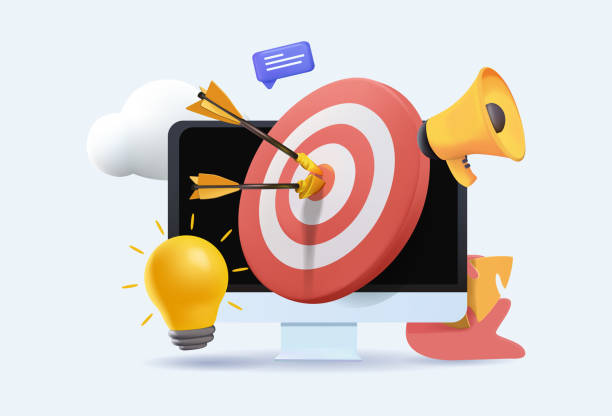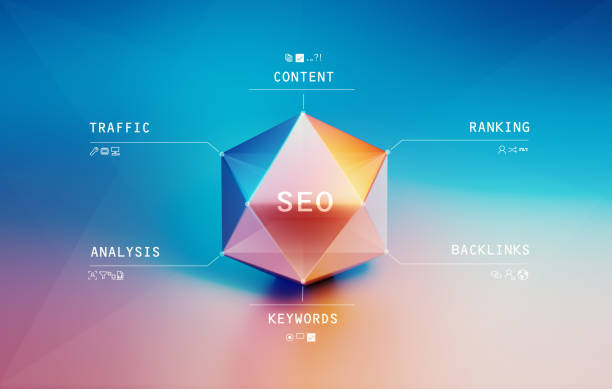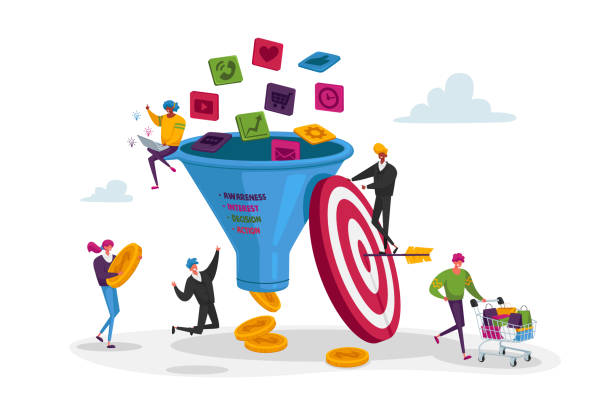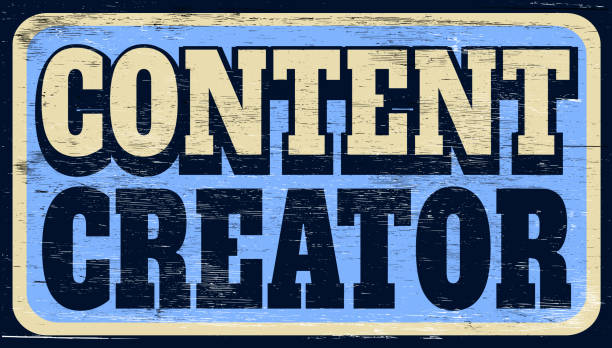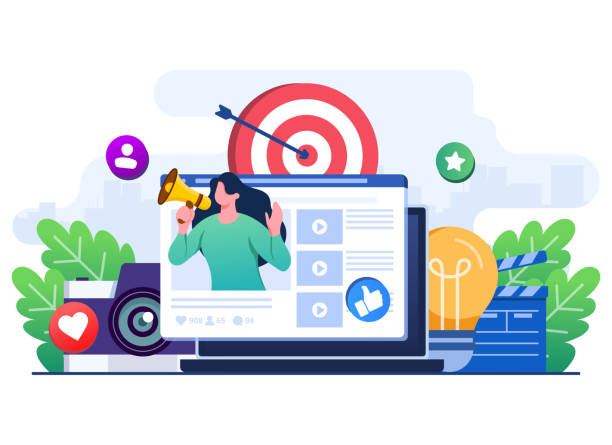## 💡 Why is a Content Marketing Strategy Essential for Your Business?
Well, first of all, let’s make one thing clear: a #content marketing strategy isn’t just a fancy phrase; it’s a fundamental necessity for any business that wants to have a voice in today’s digital world. Think of it like a precise and well-thought-out roadmap that helps you deliver the right message to the right audience at the right time.
Gone are the days when you could conquer the entire market with just a TV ad. Nowadays, people are looking for valuable content that is relevant to their needs. If you don’t produce this content, well, it’s obvious that your competitors will, and they’ll leave you in the dust. So, if you want to win this game, you need to have a strong content strategy.
A content strategy means knowing who you are, what you offer, and, most importantly, who your audience is and what they want. Once you understand these things, you can start creating content that is not only engaging but also solves the audience’s problems. This is how the audience trusts you and becomes a loyal customer. Remember that content marketing is a marathon, not a sprint. So, be patient and produce high-quality content with a regular and consistent plan to see the results.
One of the most important advantages of a content strategy is that it helps you increase organic website traffic. When your content is SEO-optimized and you use the right keywords, Google will love it and increase your ranking in search results. This means that new people will enter your site every day and become familiar with your business. Furthermore, a good content strategy helps you to be more visible on social media and have more interaction with your audience. So, if you haven’t thought about it yet, now is the time to design a proper content strategy for your business.
🎯 Setting Realistic Goals for Your Content Strategy
Setting correct and realistic goals is one of the most vital steps in a content marketing strategy. If your goals are too big and unattainable, you will get discouraged very quickly and lose your motivation. On the other hand, if your goals are too small and easy, you won’t face any challenges and you won’t grow. So, you need to find the right balance between the two.
The first step in setting goals is to know exactly what you want. Do you want to increase your sales? Or do you just want to introduce your brand to more people? Maybe you’re looking to increase your website traffic. Each of these has its own specific strategy.
One of the best methods for setting goals is to use the SMART method. This method helps you to define your goals as specific, measurable, achievable, relevant, and time-bound. For example, instead of saying, “I want to increase my sales,” say, “I want to increase my sales by 20 percent by the end of the next three months.” This way, the goal is clear, you can measure your progress, and you have a specific timeframe to achieve it. Remember that your goals should also be consistent with the overall goals of your business. You shouldn’t set a goal that is in conflict with your other strategies.
After you have set your goals, you should also specify a number of key performance indicators (KPIs) for yourself. These indicators will help you understand whether you are moving towards your goals or not. For example, if your goal is to increase website traffic, your KPI could be the number of visitors, bounce rate, and time spent on the site. If your KPIs show that you are moving in the right direction, you can rest assured. But if you see that things are not going well, you should quickly change your strategy. So, setting goals and KPIs is a continuous and dynamic process that you should always pay attention to.
Do your business processes need digital transformation? With Rasaweb Afarin’s automation solutions, automate daily operations and focus your team on innovation and development!
✅ Significant increase in productivity and efficiency
✅ Reduction of human errors and costs
✅ Ability to quickly scale the business
⚡ Contact us for smart automation! 09124438174
🔍 Keyword Research: The Golden Key to Content SEO
Keyword research is like finding the golden key to a huge treasure in the world of SEO and content marketing. If you find the right keywords and use them in your content, the chances of your target audience finding your content are much higher.
Keyword research means understanding what words people use when looking for your products or services. These words should be used in titles, descriptions, body text, and even in your images so that Google understands what your content is about and shows it to the users who are looking for it.
To start keyword research, first of all, you need to prepare a list of words and phrases that you think your audience uses. Then you can use various tools such as Google Keyword Planner, Ahrefs, Semrush, and Ubersuggest to expand this list and find other related keywords. These tools will show you how much each keyword is searched, how much competition it has, and what other related keywords there are. Remember that you should not only look at the search volume. Sometimes low-competition keywords with less search volume can give you a better result.
When you have found your target keywords, you should use them naturally in your content. You shouldn’t fill your content with keywords, which is called Keyword Stuffing. This not only doesn’t help your SEO, but it may cause Google to penalize your site. The best way is to use keywords naturally and in places where they make sense. For example, if you are writing an article about “the best SEO methods,” you can use the keyword “SEO” in the title, introduction, subheadings, and body text. But you shouldn’t start every sentence with this word or force it into the sentences.
Click here to preview your posts with PRO themes ››
| Tool | Features | Cost |
|---|---|---|
| Google Keyword Planner | Keyword research, search volume, competition | Free (with Google Ads account) |
| Ahrefs | Competitor analysis, backlinks, keyword research | Subscription |
| Semrush | Competitor analysis, SEO, advertising | Subscription |
✍️ Producing Valuable and Engaging Content
Producing valuable and engaging content is the beating heart of any content marketing strategy. If your content fails to grab the audience’s attention and add real value to them, you have no chance of success.
Valuable content means giving useful and practical information to the audience that answers their questions and solves their problems. Engaging content also means presenting this information in an engaging and captivating way so that the audience doesn’t get bored and stays with you until the end. Together, these two create a magical combination that turns the audience into a loyal customer.
To produce valuable content, you first need to know your audience. Know who they are, what they want, what problems they have, and what information they are looking for. Once you understand these things, you can produce content that exactly meets their needs. Your content can be an educational article, an engaging video, an informative infographic, a listenable podcast, or anything else that your audience enjoys. The important thing is that your content is of high quality, provides correct and accurate information, and is written in a simple and understandable language.
To produce engaging content, you need to use various techniques. For example, you can use storytelling to make your content more engaging and memorable. You can use engaging images and videos to make your content more visual and attract more attention from the audience. You can use a friendly and intimate tone to make the audience feel comfortable and connect with you. And most importantly, you need to be creative and try new and innovative ideas. Don’t be afraid to be different and offer something new. If your content is truly valuable and engaging, the audience will surely appreciate it.
📢 Content Publishing and Promotion
Content publishing and promotion is a very important step in a content marketing strategy. You have put a lot of effort into producing great content, but if no one sees it and reads it, it is useless.
It’s like cooking a delicious meal but not opening your door so that someone can come and eat it. So, you need to get your content to everyone and make sure everyone uses it. This is how you can achieve your goals and see the real impact of your content.
The first step in publishing content is to find a suitable platform for publishing it. If your content is an educational article, the best place to publish it is your own website. If it’s an engaging video, you can publish it on YouTube, Aparat, or other social media. If it’s a listenable podcast, you can publish it on podcast platforms like Spotify or Castbox. The important thing is to choose a platform where your audience is more active. After you have chosen the platform, you should present your content in it in the best possible way. For example, if you are publishing an article on your website, you should choose an engaging title, appropriate meta descriptions, and high-quality images for it.
After you have published your content, it’s time to promote it. Content promotion means getting your content into the hands of your target audience. You can use various methods to promote your content. For example, you can share it on social media, send it to your email list, advertise it in relevant groups, or even use paid advertising. The important thing is to choose a method that will give you the most return. Remember that content promotion is a continuous and ongoing process. You shouldn’t just promote your content once and then do nothing more. You should always be active and look for new ways to get your content into the hands of your audience.
Has your business reached its maximum potential in the digital space? With Rasaweb Afarin’s innovative marketing solutions, the path to growth and success will be smooth for you.
✅ Attract new targeted customers
✅ Significant increase in conversion rates
✅ Improve the identity and credibility of the online brand
Take action now for a free expert consultation!
📊 Results Analysis and Strategy Optimization
Analyzing results and optimizing strategy is the last and one of the most important steps in a content marketing strategy. You put a lot of effort into producing great content and promoting it in the best possible way, but if you don’t check the results and optimize your strategy, it’s as if you didn’t do anything.
It’s like entering a running race, but never looking at your time after the race and not trying to run faster next time. So, you should always check your results and try to improve your strategy better and better.
The first step in analyzing the results is to specify a number of key performance indicators (KPIs) for yourself. These indicators will help you understand whether you are moving towards your goals or not. For example, if your goal is to increase website traffic, your KPI could be the number of visitors, bounce rate, and time spent on the site. If your goal is to increase sales, your KPI could be the number of customers, average order value, and conversion rate. After you have specified your KPIs, you should regularly check them and see how you are doing.
Click here to preview your posts with PRO themes ››
If your KPIs show that you are moving in the right direction, you can rest assured. But if you see that things are not going well, you should quickly change your strategy. For example, if you see that your website traffic is low, you can work more on your content SEO, choose better keywords, or produce more content. If you see that your sales are low, you can focus more on your advertising, change your prices, or provide better services to your customers. The important thing is to always be ready to change and learn from your mistakes. Analyzing results and optimizing strategy is a continuous and dynamic process that you should always pay attention to.
🤝 The Role of Social Media in Content Strategy
Social media plays a very important and vital role in a content marketing strategy. You can no longer have a proper content strategy and ignore social media.
Social media acts like a loudspeaker that brings your voice to the ears of millions of people. If you use them correctly, you can introduce your brand to everyone, connect with your customers, and increase your sales.
The first step in using social media in a content strategy is to choose the right platforms. Not all social media are suitable for all businesses. You need to see which networks your audience is more active in and focus on them. For example, if your business is visual, Instagram and Pinterest can be good options. If your business is more B2B, LinkedIn can be suitable for you. And if you want to have more interaction with your audience, Twitter and Facebook can help you.
After you have chosen the right platforms, you need to produce the right content for each platform. Each platform has its own specific content format. For example, on Instagram, you should use more engaging images and videos. On Twitter, you should use more short and concise texts. On LinkedIn, you should use more specialized articles and educational content. The important thing is to produce content that is suitable for each platform and attracts the attention of the audience. Remember that social media is not just for advertising. You should try to connect with your audience, answer their questions, hear their opinions, and interact with them. This is how you can create a loyal community around your brand.
| Social Media | Suitable Content Type | Application |
|---|---|---|
| Engaging images and videos, Stories | Brand introduction, audience interaction | |
| Short texts, news, opinions | Audience communication, information dissemination | |
| Specialized articles, educational content | Professional networking, workforce attraction |
📱 Optimizing Content for Mobile
Optimizing content for mobile is an inevitable necessity in today’s world. It’s no longer like the old days when only computers were used to access the Internet. Now, most people use their mobile phones to surf the Internet.
If your content is not optimized for mobile, you will lose a lot of your audience. Because no one wants to open a website that is not displayed correctly on mobile or watch a video that is not played correctly on mobile.
The first step to optimizing content for mobile is to design your website responsively. Responsive means that your website automatically adapts to the screen size of the device being used to access it. This way, you don’t have to worry about whether your website is displayed correctly on mobile or tablet. The second step is to use low-volume images and videos. Heavy images and videos cause your website to load slowly and tire users. Try to use compression formats and reduce the size of your files as much as possible.
The third step is to use readable fonts and appropriate sizes. Fonts that are too small or unreadable on mobile make it difficult for users to read your content and leave your website. Try to use fonts that are readable and their size is also suitable for mobile. The fourth step is to use large and touchable buttons and links. Buttons and links that are too small on mobile make it difficult for users to click on them easily and leave your website. Try to use buttons and links that are large and easily touchable. By following these simple tips, you can optimize your content for mobile and provide a better user experience for your audience.
📈 Measuring Content Return on Investment (ROI)
Measuring the content return on investment (ROI) is a very important and necessary thing to understand whether your content marketing strategy is working or not. If you don’t measure the ROI of your content, you can’t understand whether you are spending your money correctly or not.
It’s like opening a shop, but never calculating your sales and not understanding whether you are making a profit or a loss. So, you should always measure the ROI of your content and try to increase it.
The first step to measuring content ROI is to calculate the costs of producing and promoting your content. These costs include the cost of manpower, the cost of content production, the cost of advertising, and the cost of the tools you use. The second step is to calculate the revenue you earn from your content. This revenue may include direct sales, lead generation, increased website traffic, and increased brand awareness. The third step is to calculate your content ROI using the following formula:
Click here to preview your posts with PRO themes ››
ROI = (Revenue – Cost) / Cost
For example, if you spent 100 million Tomans to produce and promote your content and earned 150 million Tomans in revenue, your ROI would be 50 percent. This means that for every 100 Tomans you spent, you earned 150 Tomans in revenue. A good ROI shows that your content strategy is working well and you are spending your money correctly. But if your ROI is low, you should change your strategy and try to improve it. Remember that measuring content ROI is a continuous and ongoing process. You shouldn’t just measure the ROI of your content once and then do nothing more. You should always check the ROI of your content and try to increase it.
Is your website not optimized in terms of speed and efficiency? Rasaweb Afarin improves the performance of your website significantly with optimization consulting and programming.
✅ Complete analysis and troubleshooting
✅ Optimal coding and stable structure
✅ Increase user and search engine satisfaction
For a fast and powerful website, call 09124438174!
🧪 Testing and Continuous Improvement
Testing and continuous improvement is a very important principle in a content marketing strategy. The digital world is always changing, and what works today may not work tomorrow.
So, you should always be ready to test your strategy, check its results, and improve it. Like a scientist conducting an experiment, you should test your hypotheses, collect data, and draw conclusions based on them. This is how you can have a successful content strategy.
The first step to testing and continuous improvement is to create a culture of experimentation in your team. All team members should know that experimenting is a good thing and there is nothing wrong with something not working. The important thing is to learn from your mistakes and try to do better next time. The second step is to use analytical tools to understand how your content is performing. Tools like Google Analytics, Google Search Console, and social media tools help you understand which content gets the most views, which keywords drive the most traffic, and which social networks get the most engagement.
The third step is to test your hypotheses. For example, if you think that a particular title will cause more users to click on your content, test that title and see if that is really the case. You can use A/B testing to compare two different titles and see which one performs better. The fourth step is to improve your strategy based on the results of your experiments. If something didn’t work, change it. If something worked well, try to use it more. The important thing is to always look for new ways to improve your strategy. With testing and continuous improvement, you can have a content strategy that is always improving and helps you achieve your goals.
| Question | Answer |
|---|---|
| What is a content marketing strategy? | A comprehensive plan to create, publish, and promote valuable content in order to attract and retain the target audience. |
| Why is a content marketing strategy important? | It helps you increase brand awareness, attract website traffic, generate leads, and ultimately increase sales. |
| How can I identify my target audience? | By researching current customers, analyzing demographic data, and creating a target audience persona. |
| What type of content should I produce? | Depending on your target audience and marketing goals, you can use articles, videos, infographics, podcasts, and more. |
| How can I SEO-optimize my content? | By researching keywords, optimizing titles and meta descriptions, using keywords in text, and creating internal and external links. |
| How can I promote my content? | By sharing on social media, sending to email lists, paid advertising, and collaborating with influencers. |
| How can I measure the results of my content marketing strategy? | Using website and social media analytics tools, and tracking key performance indicators (KPIs). |
| How long does it take to see the results of a content marketing strategy? | Content marketing is a long-term process and it may take several months to see significant results. |
| How can I improve my content marketing strategy? | With continuous testing and improvement, tracking results, and keeping up with the latest content marketing trends. |
| Do I need professional help with my content marketing strategy? | If you do not have enough experience or do not have enough time to manage your content marketing strategy, you can get help from a content marketing agency. |
And other services of Rasa Web Advertising Agency in the field of advertising
• Design and development of online training systems (LMS)
• Implementation of advertising campaigns on Pinterest (Pinterest Ads Campaigns)
• Optimizing user experience in payment systems
• Consulting and development of visual content marketing strategy
• Producing online survey and quiz content
And more than hundreds of other services in the field of internet advertising, advertising consulting and organizational solutions
Internet Advertising | Advertising Strategy | Advertorials
Are your data alone not enough?
We give them meaning by intelligently interpreting the data.
✅ Data is transformed into meaning.
✉️ info@idiads.com
📱 09124438174
📞 02126406207
🏢 Tehran, Mirdamad Street, next to the Central Bank, South Kazerun Alley, Ramin Alley, No. 6

